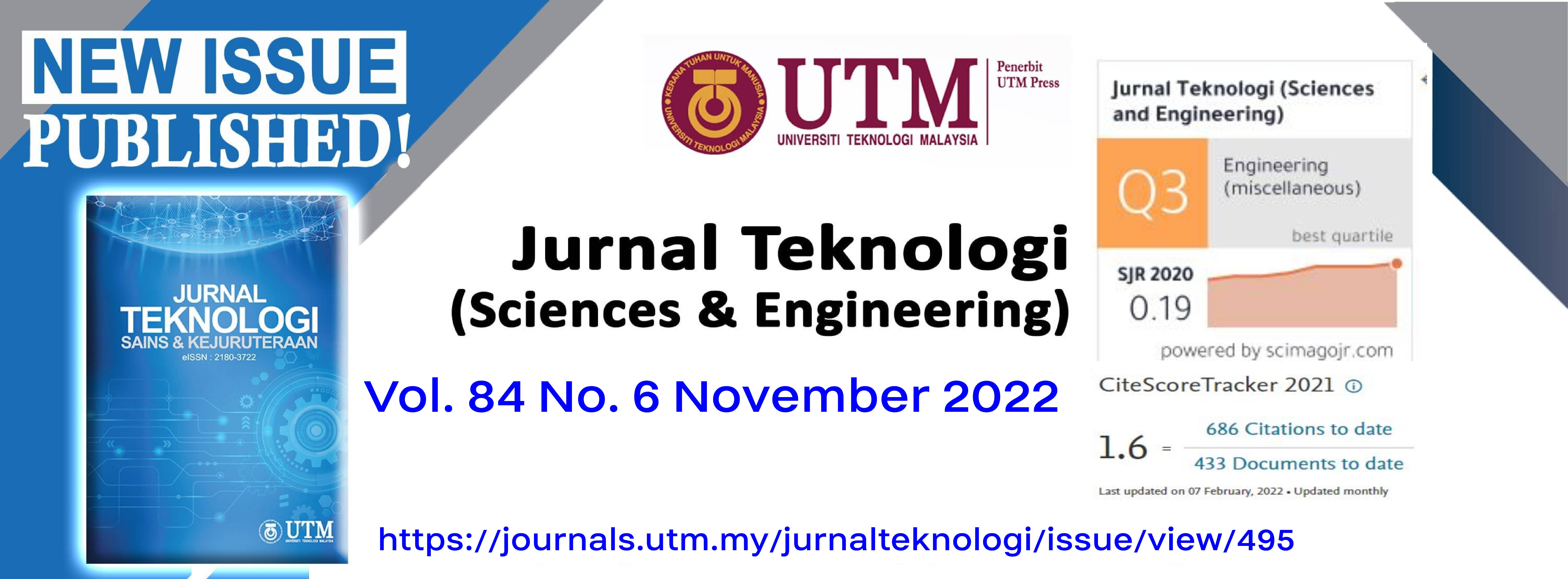MULTIRESPONSE OPTIMIZATION ON THE PROCESS OF ROOF TILES MANUFACTURE USING THE TAGUCHI AND PCR-TOPSIS METHOD
DOI:
https://doi.org/10.11113/jurnalteknologi.v84.18235Keywords:
Roof tiles, Taguchi, multiresponse, PCR-TOPSIS, kilnAbstract
Most people on Java Island in Indonesia use roof tiles as roofs for their buildings. The advantages of tile include the availability of various models, cheaper price, light weight, easy installation process, absorb heat, low noise when exposed to rain, and durable. The tiles produced by small and medium industries have not met the quality requirements. This study was conducted to determine the optimum factor and level in the roof tiles production by adding glass powder and wood ash into clay and the variation of roof tiles placement on kiln. Glass powder and wood ash contain of silicon dioxoide of about 85%. It is an important substance to increase the strength of the tile. Meanwhile the responses measured in the study were compressive strength, visual testing, water absorption, and water permeability. Taguchi method is used to improve the product quality and production processes with high efficiency in both cost and the number of treatments. PCR-TOPSIS Method was used to determine the optimal setting of the process parameters. From the optimization results, the optimum combination of level factors is A1B1C1 (4% of glass powder, 4% of ash, and first level of the kiln placement).
References
Bayarzul, U., and Temuujin, J. 2018. Characterization of Glass Ceramics Produced from Natural and Waste Raw Materials. Solid State Phenomena. 271: 23-27.
Belavendram, N. 1995. Quality by Design. Prentice Hall International: Great Britain.
De Silva, G. H. M. J. S., and Surangi, M. L. C. 2017. Effect of Waste Rice Husk Ash on Structural, Thermal and Run-Off Properties of Clay Roof Tiles. Construction and Building Materials. 154: 251-257.
Ducman, V., Škapin, A. S., Radeka, M., and Ranogajec, J. 2011. Frost Resistance of Clay Roofing Tiles: Case Study. Ceramics International. 37: 85-91.
Gömze, L. A. 2010. Mechanochemical Phenomena during Fine Comminution of Clay Minerals for Ceramic Bricks and Roof-Tiles. Materials Science Forum. 659: 19-24.
Grau, F., Choo, H., Hu, J. W., and Jung, J. 2015. Engineering Behavior and Characteristics of WoodAsh and Sugarcane Bagasse Ash. Materials. 8: 6962-6977.
Gudono. 2016. Analisis Data Multivariat. 4rd ed. Yogyakarta: BPFE.
Hajiyanti, I. N. 2007. Optimasi Suhu Pembakaran Genteng Untuk Meningkatkan Kualitas Genteng Keramik Desa Kemiri Kecamatan Kebakkramat Kabupaten Karanganyar. Undergraduate Theses. Universitas Sebelas Maret: Surakarta (UNS).
Karolina, R., Syahrizal, Putra, M. A., and Prasetyo, T. A. 2015. Optimization of the Use of Volcanic Ash of Mount Sinabung Eruption as the Substitution for Fine Aggregate. Procedia Engineering. 125: 669-674.
Kazmi, S. M. S., Abbas, S., Nehdi, M. L., Saleem, M. A., and Munir, M. J. 2017. Feasibility of Using Waste Glass Sludge of Ecofriendly Clay Bricks. Journal of Materials in Civil Engineers. 1: 04017056-1-04017056-12.
Mozo, W., Cortés, M., and Vera, E. 2019. Investigation on Fired Clay Bricks by Replacing Clay with Recycled Glass and Sludge Ash. Journal of Physics: Conference Series. 5th International Meeting for Researchers in Materials and Plasma Technology (IMRMPT). San José de Cúcuta: Colombia. IOP Publishing: Bristol, United Kingdom. 1386:1-7.
Pratiwi, C., Sambowo, K. A., and Supardi. 2014. Tinjauan Beban Lentur dan Rembesan Air Pada Genteng dengan Bahan Tambah Limbah Serbuk Kaca. e-Jurnal Matriks Teknik Sipil. 2.
Rai, S., Lataye, D. H., Chaddha, M. J., Mishra, R. S., Mahendiran, P., Mukhopadhyay, J., Yoo, C., and Wasewar, K. L. 2013. An Alternative to Clay in Building Materials: Red Mud Sintering Using Fly Ash via Taguchi’s Methodology. Advances in Materials Science and Engineering. 2013: 1-7.
Ramadani, K. 2018. Sintesis dan Karakterisasi Silika Gel dari LimbahKaca untuk Menurunkan Kesadahan Air. Jurnal Saintifik. 4.
Rasma, A., Setiati, A., and Subari, S. 2011. Identifikasi Kualitas Produk Genteng Keramik Produksi Industri Kecil di Wilayah Aceh, Jawa dan Nusa Tenggara Barat Berbasis Standar Nasional Indonesia (SNI). Jurnal Standardisasi. 13: 98-110.
Ross, P. J. 1996. Taguchi Techniques for Quality Engineering: Loss Function, Orthogonal Experiments, Parameter and Tolerance Design. New York: McGraw-Hill International Edition.
Setyanto, N. W., and Lukodono, R. P. 2017. Teori dan Aplikasi Desain Eksperimen Taguchi. UB Press: Malang.
Soejanto, I. 2009. Desain Eksperimen dengan Metode Taguchi. Graha Ilmu: Yogyakarta.
Sultana, M. S., Ahmed, A. N., Zaman, M. N., Rahman, M. A., Biswas, P. K., and Nandy, P. K. 2015. Utilization of Hard Rock Dust with Red Clay to Produce Roof Tiles. Journal of Asian Ceramic Societies. 3: 22-26.
Tiamiyu, A. O., and Ibitoye, S. A. 2012. Effect of Clay Addition on Service Properties of a Developed OPF–CNSL–Formaldehyde Roofing Material. Construction and Building Materials. 36: 358-364.
Downloads
Published
Issue
Section
License
Copyright of articles that appear in Jurnal Teknologi belongs exclusively to Penerbit Universiti Teknologi Malaysia (Penerbit UTM Press). This copyright covers the rights to reproduce the article, including reprints, electronic reproductions, or any other reproductions of similar nature.
















